When This Bike Shop Manager Was Diagnosed With Brain Cancer, Cycling Kept Him Balanced
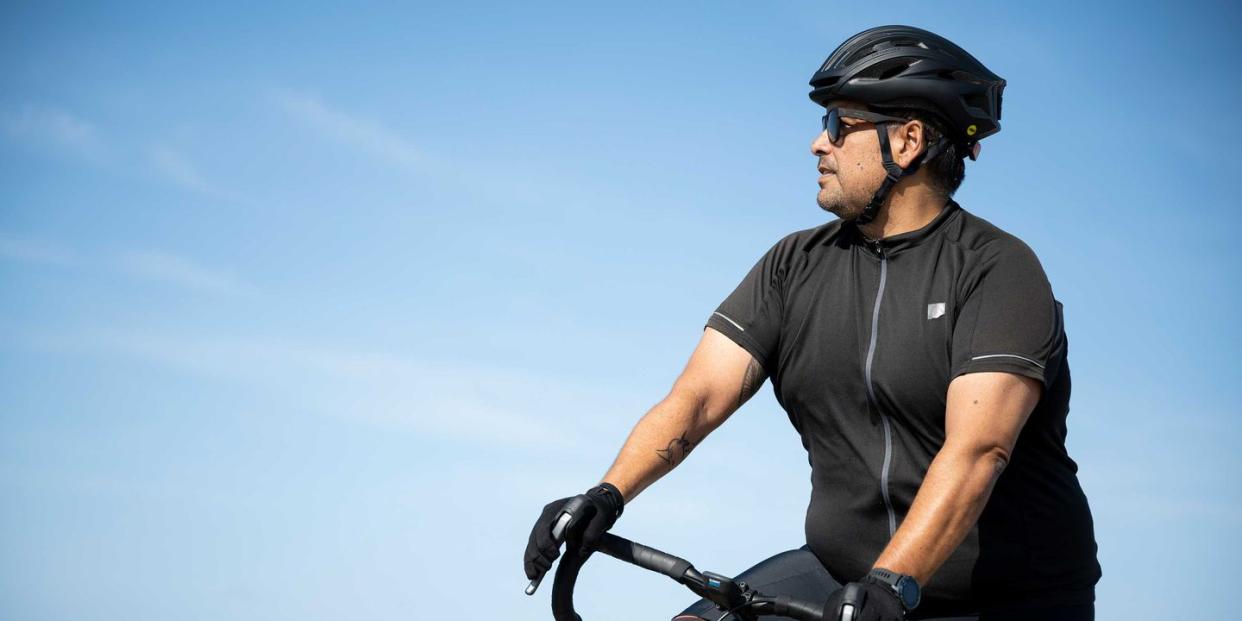
Bruce McCarthy can best be described as a classic grease-under-the-fingernails bike shop guy. As the store manager at Outspokin Bicycles in Clearwater, Florida, he can, at once, order next season’s fleet of bicycles from manufacturers, ring up an in-store sale, encourage an aspiring cyclist, and change the bottom bracket on a rig in the repair stand. Being on two wheels, and making it easy for others to do the same, defines his life.
The 51-year-old husband and father of two rides for fitness and competes in triathlons. He pedals to run errands and to join friends on weekend outings. For four decades, Bruce has been climbing on the saddle for entertainment, transportation, and refuge; riding helps him find balance.
Sign up for Bicycling All Access to learn more about how cycling can change your life
In January of 2020, that balance began to list. Without warning, Bruce suffered a grand mal seizure. He was headed to the shop when he suddenly became confused and felt, as he describes, “swimmy.” He returned home, where his wife noticed his increasingly clammy skin before the convulsions began. Then everything went black for the next 24 hours.
When he woke again in the hospital, a team was searching for reasons why such a catastrophic event would befall someone so active with no history of illness and no alcohol or drug addictions. The determination was that a past concussion, which Bruce believes could have come from a number of tumbles while playing sports over the years, had left scarring on his brain. Per post-seizure protocol, he was not allowed to drive for six months and told not to cycle alone.
“I have no recollection of the seizure,” Bruce told Bicycling over the phone. “But I was scared in the hospital when they started labeling me as an epileptic. I saw my freedom and independence rapidly flying away.”
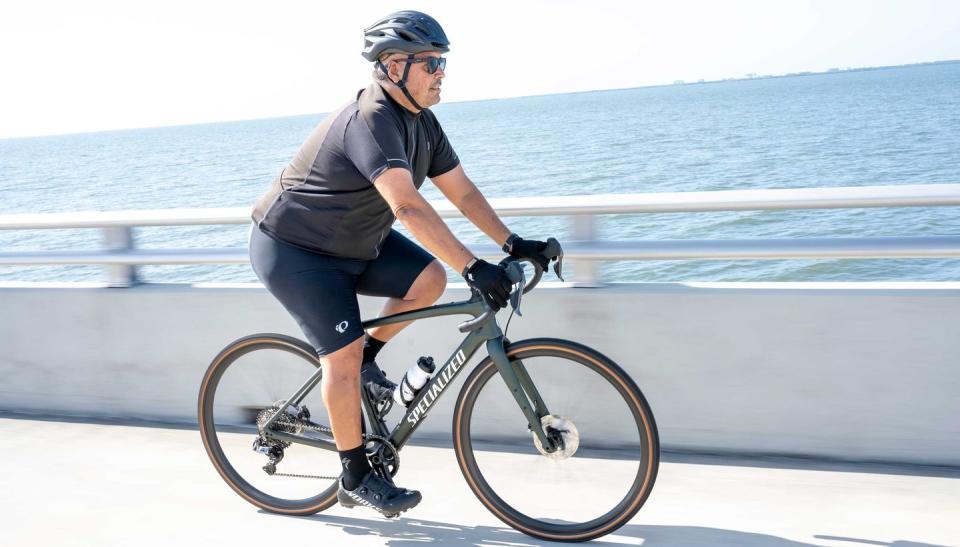
When he eventually started riding again, Bruce either rode with friends, especially if he was in a remote area, or his wife tracked him via Wahoo. But then in October 2020, while at home, he started to have that swimmy feeling again. He texted his wife to come home; when she arrived, he was already unconscious. This time, after he awakened from another day of seizure-induced darkness, advanced neurological tests had been ordered. The next two months were a swirl of MRIs, CT scans, and EEGs.
In December 2020, Bruce wrote on his website (appropriately, bikeshopbruce.com): “[The experts] danced around the terms cancer, tumor, radiation, surgery. Bottom line, at the base of my brain where the brain stem meets the spinal cord and spinal fluid forms, there is something.” His tone was positive, even nonchalant, but belied obvious fear. “Based on the condition that the experts scribbled on a piece of paper, the future looks scary. I will keep you posted.”
A month later, he was told surgery was necessary—or as Bruce described it: “My brain will be exposed to fresh air.” That “something,” it turns out, was a golf ball-sized gliomatosis cerebri: a tumor on his right temporal lobe.
After a few nerve-racking weeks, tests confirmed what his doctors and family suspected and feared: cancer. Bruce was diagnosed with stage four glioblastoma. If post-op treatment cooperated, however, the tentative prognosis was hopeful.
“Brain surgery is no fun—if anyone tells you differently, they are lying,” Bruce said in mid-April.
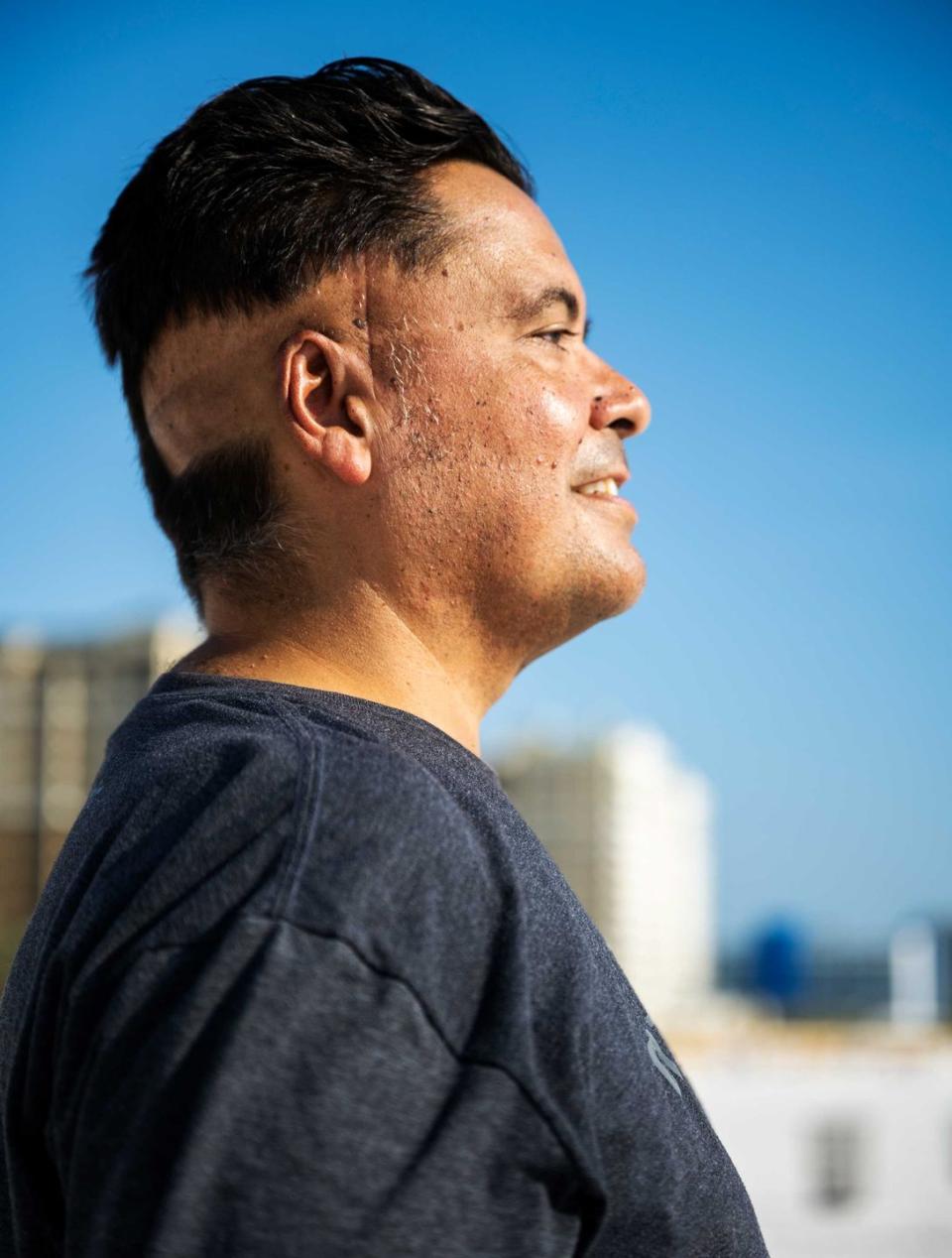
Bruce and I have been friends since third grade, but we lost touch after high school. It was, naturally, bicycles that brought us back together. Through social media, he sent messages of support and generous praise after reading my travel articles, which were becoming more cycle-focused. I checked in about gear and secretly wished my days were spent more like his.
I learned of the severity of Bruce’s condition only after the six-hour surgery to remove the potentially cancerous area of his brain and then staple his skull shut had occurred. The day we talked, he was halfway through six weeks of daily chemo and radiation treatments, which ended May 5. His tone combined irreverence, guarded optimism, and the realism of someone who’s had other people’s fingers inside his head.
“All indications have been good, but the hope is treatments will eliminate the danger because they’ve taken as much brain as can be taken without affecting bodily functions like swallowing and breathing. We’re maxed out.”
The weight of that sentence—“We’re maxed out.”—hung between us for a long moment. We sat on the phone in silence.
“I’ll be honest, there have been more than a few dark moments,” Bruce continued. “Not knowing if you’ll see the closest people in your life again is not a good place to be. I think the most important reason for me to share my story is to let people know it gets better. I want to communicate with that person in the dark thinking about pulling the pistol from the bedside drawer. It is important to lean on your community—mine is my family and being on a bike.”
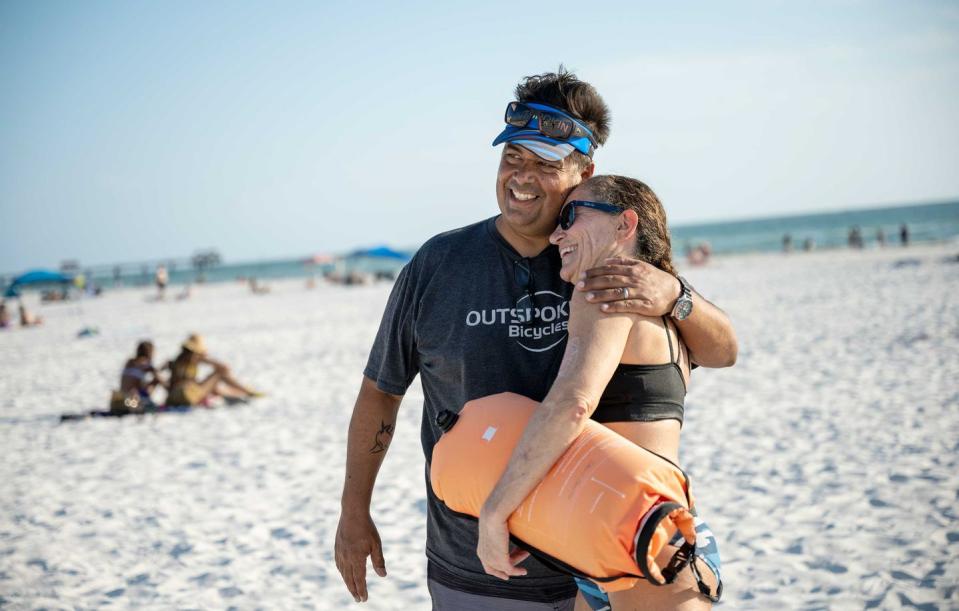
After a trauma as earth-rocking as brain surgery, tiptoeing between reinstating routine and maintaining realism is loaded with longing, fraught with disappointment, demanding of patience, and mercilessly layered with comparisons to one’s former self. Success during these stages of self-doubt, Bruce believes, is akin to being on a cycling team and leaning on your teammates.
“I have a group of people—family, friends, and coworkers—who push me along this climb and kick me in the behind to go for a ride or get outside,” he said. He explained that the regular check-ins to gauge his physical AND emotional state make it possible to imagine the next phases of recovery.
“Whether it’s a scripture or song, a funny video, or a wildly inappropriate joke, the friends—old and new—who consistently reach out to him are priceless,” Bruce’s wife, Donna, told Bicycling. “I mean, his nickname has always been ‘Bike Shop Bruce.’ Much of his self-identity is tied to the bike. It gives him what is sometimes his only sense of independence.”
Understanding that grip that cycling can have on self-identity is not always as obvious to medical professionals, who are often removed from what a patient’s life looked like before diagnosis. As luck would have it, Bruce had cyclists on his team of surgeons and oncologists.
“As those of us who like cycling know, doing something you love helps your mood,” Dr. Peter Forsyth—Bruce’s neurooncologist, a longtime cyclist, and the chairman of the Neurooncology department at Moffitt Cancer Center in Tampa, Florida—told Bicycling. “More physicians should routinely prescribe exercise as enthusiastically as other cancer treatments. There are strong data that show exercise helps patients live longer and have better lives. It is important to remember that people aren’t their tumors. Rather, continue to enjoy life and be yourself. The tumor [cancer] is something that you live with, yet it’s important to maintain yourself as a person.”
Presently, Bruce’s routine is a balance between reclaiming “normal” and the abnormal activities necessary to make the future possible. Even after weeks of daily chemo and radiation treatments, which were accompanied by anti-nausea medication, he knows he will be monitored for months through checkups, MRIs, bloodwork, and consultations. Bruce is also aware that this is really only the beginning of monitoring for cancer’s potential return for the rest of his life.
When it comes to riding, his biggest challenge—like any cyclist, really—is managing fatigue. Bruce rides two or three times per week, alone and with shop mates, for around 45 minutes. He rides in low-traffic areas, like parks, where accidents are less likely.
“Getting on the road and shifting through gears and spinning lifts me and allows me to forget that I am cancer patient,” Bruce said. But he admitted, “at least until I hit a hill. Then I know there is work to do.”
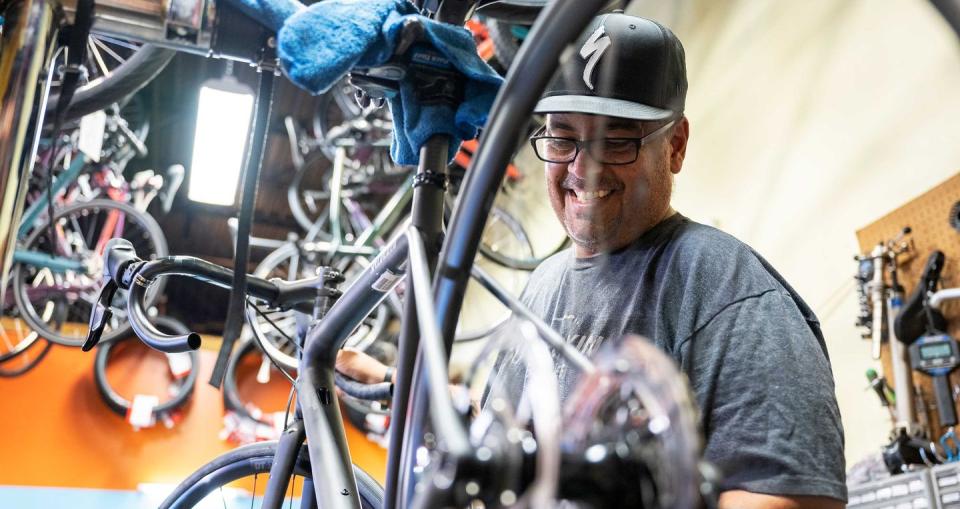
He’s also gone back to work and spends time on the floor as prudence allows. He and his wife have since moved to an apartment down the street from the bike shop for an easier commute.
During our phone conversations—peppered with our childhood memories and, since we were both products of the Greg LeMond era, epic moments in Tour de France history—Bruce focused on how lucky he’d been, and rarely drifted into his struggle’s negative side. Following every talk, I was reminded of the power of cycling, the importance of self-locomotion, and the fleeting nature of freedom.
“My bikes hang on the dining room wall of our apartment,” Bruce said during one call. “After my brain surgery, I would just stare at them. After two months, when my neurosurgeon cleared me to very cautiously return to cycling, I didn’t even wait a day. My wife and I both got choked up when I turned the ratchet on my helmet and dials on my shoes. Those are the sounds of Saturday mornings heading out to meet the local ride, and of riding to work or the grocery store. I was very nervous and not 100-percent confident in my balance. The first pedal turns were magnificent. The muscle memory kicked in—free again! The ride was slow and short, but considering I was in a neurology ICU a month ago, I will take it.”
Today, Bruce’s designation is “long-term survivor,” which means the prediction for his survival is more than 10 years. And though he remains cautiously optimistic about a future filled with regular monitoring, checkups, and medication, his strength and his spirit are already, and again, gaining momentum as his personality’s dominant theme.
“I am a bike shop lifer,” Bruce said nearly three weeks after his daily treatments ended. “For me, cycling has always been about freedom and adventure—whether it’s riding the Ironman course on the Big Island of Hawaii, or bikepacking with a buddy on the way to Key West. So, knowing I’ll be well enough to plan the next cycling trip is a huge boost. Like most travelers, just knowing you can plan the next trip is almost as much fun as the trip itself.”
You Might Also Like

